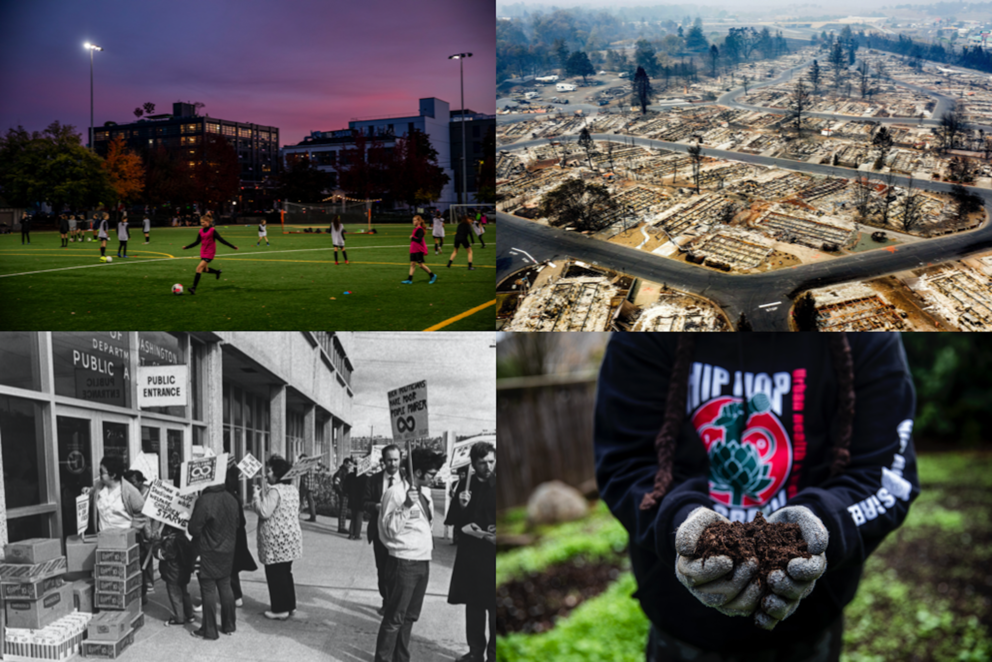Stateside, we’ve been living with the pandemic longest, and we’ve seen the evolution of protest here at the CHOP/CHAZ alternately celebrated and demonized across the country.
But the story of our city — and our species — is one of resilience and adaptation. Already, city planners are imagining how to transform Seattle into a more livable, equitable place. Scrappy citizens are growing new gardens between plots of concrete to feed their neighbors, and foresters are helping communities on the edge of the wilderness prepare for wildfire before the inevitable influx of new Pacific Northwesterners move there. Some of the very streets we share are changing to favor pedestrians, riders and businesses over cars.
For our Focus series on Remaking Seattle, we wanted to tell stories of problem solving during a time of immense challenge. To accomplish this, our reporters followed the people on the ground who are pushing for these changes. Hannah Weinberger shares how a single basil plant in Cal Anderson grew into a network for BIPOC farmers in the city, and why Stay Healthy Streets might be here for good. Margo Vansynghel explains how the idea that every neighborhood in Seattle can host everything you need within a 15-minute walk or ride isn’t as far-fetched as it sounds. Mandy Godwin takes us into the forest, where a close-knit town fought fire with a cheeky YouTube video. And Knute Berger and Matt Bennett help us understand how the mental and physical terraforming of Seattle has always been a constant in our city’s history and psyche. All of it is tied together with Dorothy Edwards’ evocative visual storytelling.
Between most of these crises remaining unresolved and the looming, uncertain holidays, it’s a dark time out there (never mind our gloomy season). But if you squint, there’s a lot of hope and excitement in learning all the ways Seattleites are coming together — even if we have to stay 6 feet apart.
Explore the series
Seattle has faced calamity before and come out stronger
The city has a history of rebuilding after all-consuming fire and economic disaster. We can do it again.
Seattle could become the next 15-minute city
By making sure essential services are just a short walk or ride away, the city could recover from the pandemic and fight climate change at the same time.
Pandemic streets showed the promise of car-free Seattle
Seattle’s plan to give walkers and riders safer streets started with a bang. Whether it remains depends on how loudly residents fight to keep them.
Preparing Seattle’s outskirts for a fiery ‘big one’
Wildfires like the ones that struck Portland's suburbs are inching closer to Seattle. Here's how we can prepare.
CHOP made urban gardening radical. The pandemic made it essential
A movement to use land for productive gardening will help communities support themselves during and after the pandemic.
Seattle’s Cal Anderson Park is a microcosm of national upheaval
From CHOP to the U.S. Army firing on Natives, the Capitol Hill park has always captured the nation’s fissures in a few short blocks.


